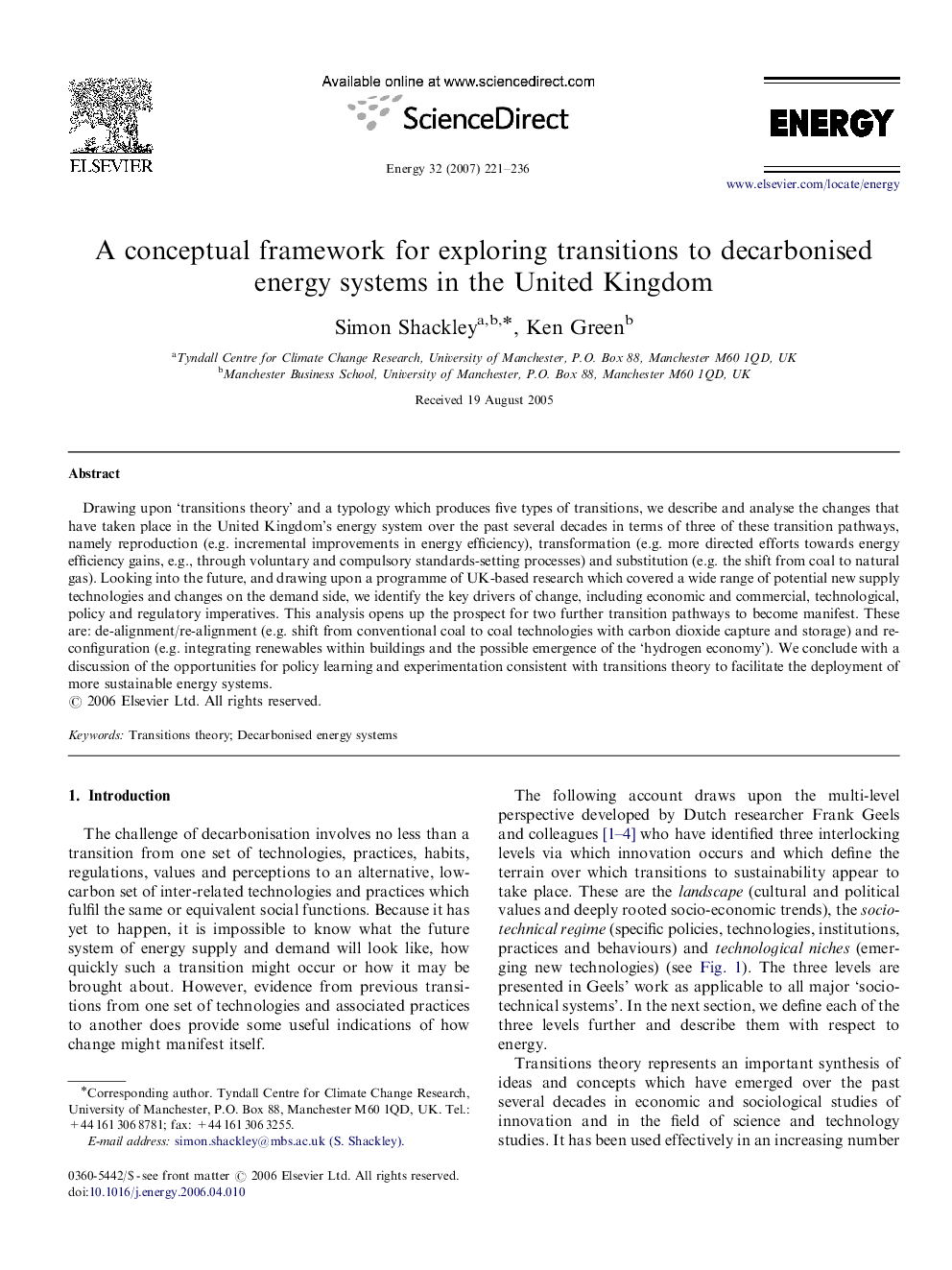| Article ID | Journal | Published Year | Pages | File Type |
|---|---|---|---|---|
| 1735969 | Energy | 2007 | 16 Pages |
Drawing upon ‘transitions theory’ and a typology which produces five types of transitions, we describe and analyse the changes that have taken place in the United Kingdom's energy system over the past several decades in terms of three of these transition pathways, namely reproduction (e.g. incremental improvements in energy efficiency), transformation (e.g. more directed efforts towards energy efficiency gains, e.g., through voluntary and compulsory standards-setting processes) and substitution (e.g. the shift from coal to natural gas). Looking into the future, and drawing upon a programme of UK-based research which covered a wide range of potential new supply technologies and changes on the demand side, we identify the key drivers of change, including economic and commercial, technological, policy and regulatory imperatives. This analysis opens up the prospect for two further transition pathways to become manifest. These are: de-alignment/re-alignment (e.g. shift from conventional coal to coal technologies with carbon dioxide capture and storage) and re-configuration (e.g. integrating renewables within buildings and the possible emergence of the ‘hydrogen economy’). We conclude with a discussion of the opportunities for policy learning and experimentation consistent with transitions theory to facilitate the deployment of more sustainable energy systems.
